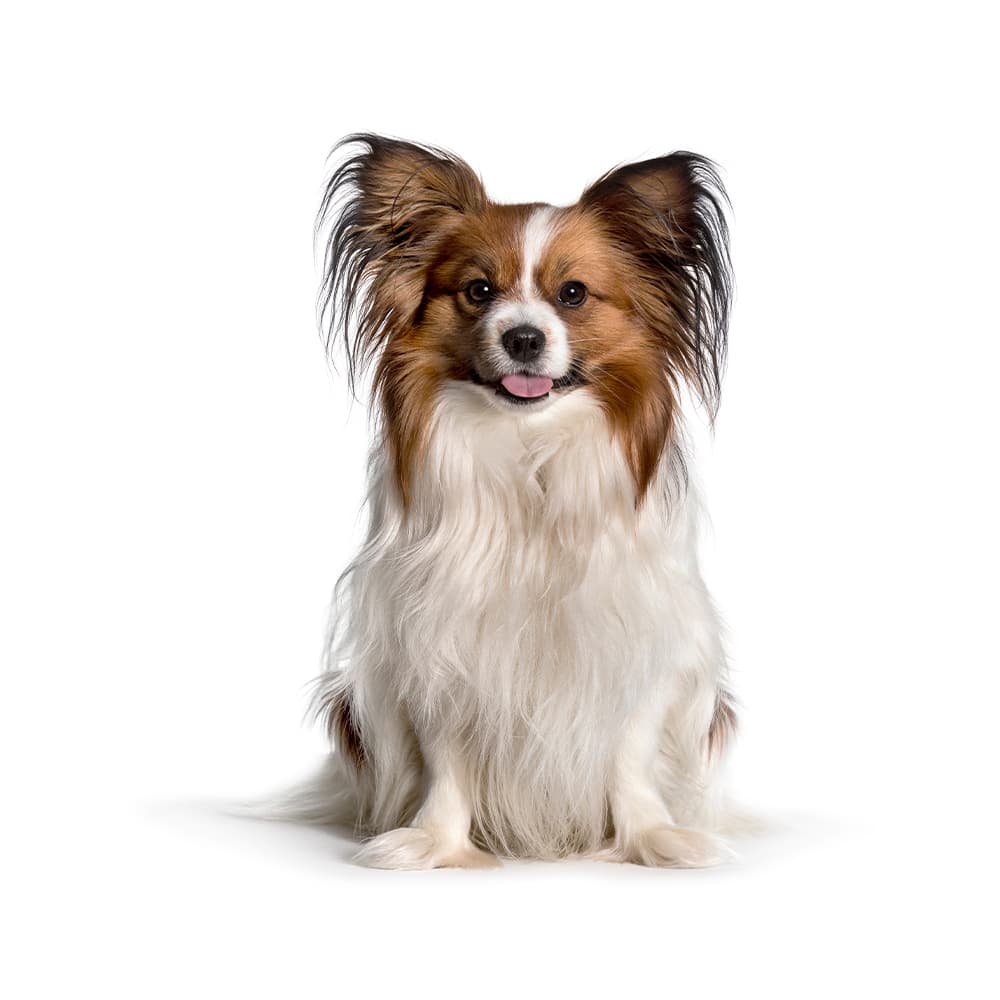Basepaws analyzes this breed as part of a group of other breeds.


Basepaws analyzes this breed as part of a group of other breeds.


Basepaws analyzes this breed as part of a group that also includes Papillon, Phalene.
Despite being distinct in characteristics and origin, some pairs or groups of breeds lack the number of genetic differences required to distinguish these populations from one another, particularly when only a subset of these differences are inherited by a mixed breed dog. As we continue to expand our breed database, we aim to increase the resolution of our ancestry algorithm such that differentiating between increasingly specific ancestral sources becomes possible.

The Phalene is a variation of the Papillon breed, with the primary distinction being their ear type. Phalenes have drop ears that lay flat against their head, which gives them a resemblance to a moth. In fact, ""Phalène"" is French for ""moth"". Despite being essentially the same breed, the Papillon and Phalene are considered distinct in some canine registries, while others consider them to be simply different versions of the same breed. The Phalene, similar to the Papillon, is a toy breed that originated in Europe. The breed can be traced back to the 16th century, where it was commonly seen in artwork, often as a companion to noble ladies. This variant of the Papillon, with its ears down, was actually the original type, while the erect-eared Papillon evolved later. Over time, the popularity of the erect-eared version rose, and the Phalene became less common. It's only in recent decades that breeders have been making efforts to revive the Phalene.
As a variant of the Papillon breed, Phalenes are susceptible to the same health conditions, including black hair follicular dysplasia, cleft palate, cryptorchidism, deafness, epilepsy, Factor VII deficiency, hydrocephalus, intervertebral disk disease, meningoencephalitis (necrotizing), heart conditions such as mitral valve disease, neuroaxonal dystrophy, patellar luxation, polydontia, polydontia (retained primary teeth), portosystemic shunts, syringomyelia, urolithiasis (calcium oxalate), von Willebrand disease (Type I). They may also be prone to eye disorders such as progressive retinal atrophy (crd4), progressive retinal atrophy (PAP1), cataracts, distichiasis, persistent pupillary membranes, and vitreous degeneration.
Phalenes are known for their friendly, intelligent, and outgoing nature. They're good with children and other animals, making them excellent family pets. Phalenes are adaptable and can live comfortably in an apartment as long as they get regular exercise. Despite their small size, they are relatively active and enjoy playtime and walks. They also have a longer lifespan compared to many other breeds, often living into their mid-teens with proper care
A canine genetic lineage is a group of individuals or entire breeds that descended from common ancestors predating modern breed formation. Often these lineages are associated with a ‘type’ of dog with a unique historical working role and associated behaviors (e.g., herding, scent hunting, etc.).
Breeds within the toy dog lineage were developed to be companion animals. They originated as lap dogs for royalty, nobility, and affluent individuals, and typically weigh less than 15 pounds. Breeds within the toy dog lineage were bred to be friendly and sociable, playful, and energetic while also having a heightened awareness of their environment.
Example breeds with ancestry from this lineage include Chihuahua, Maltese, and Shih Tzu.
The name "Phalene" refers to the breed's dropped ears which resemble a moth's wings in the resting position.
This breed has been depicted in many paintings from the Renaissance period.
Phalenes are known for their agility and are often participants in dog agility competitions.
https://vgl.ucdavis.edu/breed/phalene
https://www.akc.org/dog-breeds/papillon/
https://www.ukcdogs.com/papillon
Recommended by top vets with decades of experience
21 breeds
64 genetic health markers
50 genetic trait markers
